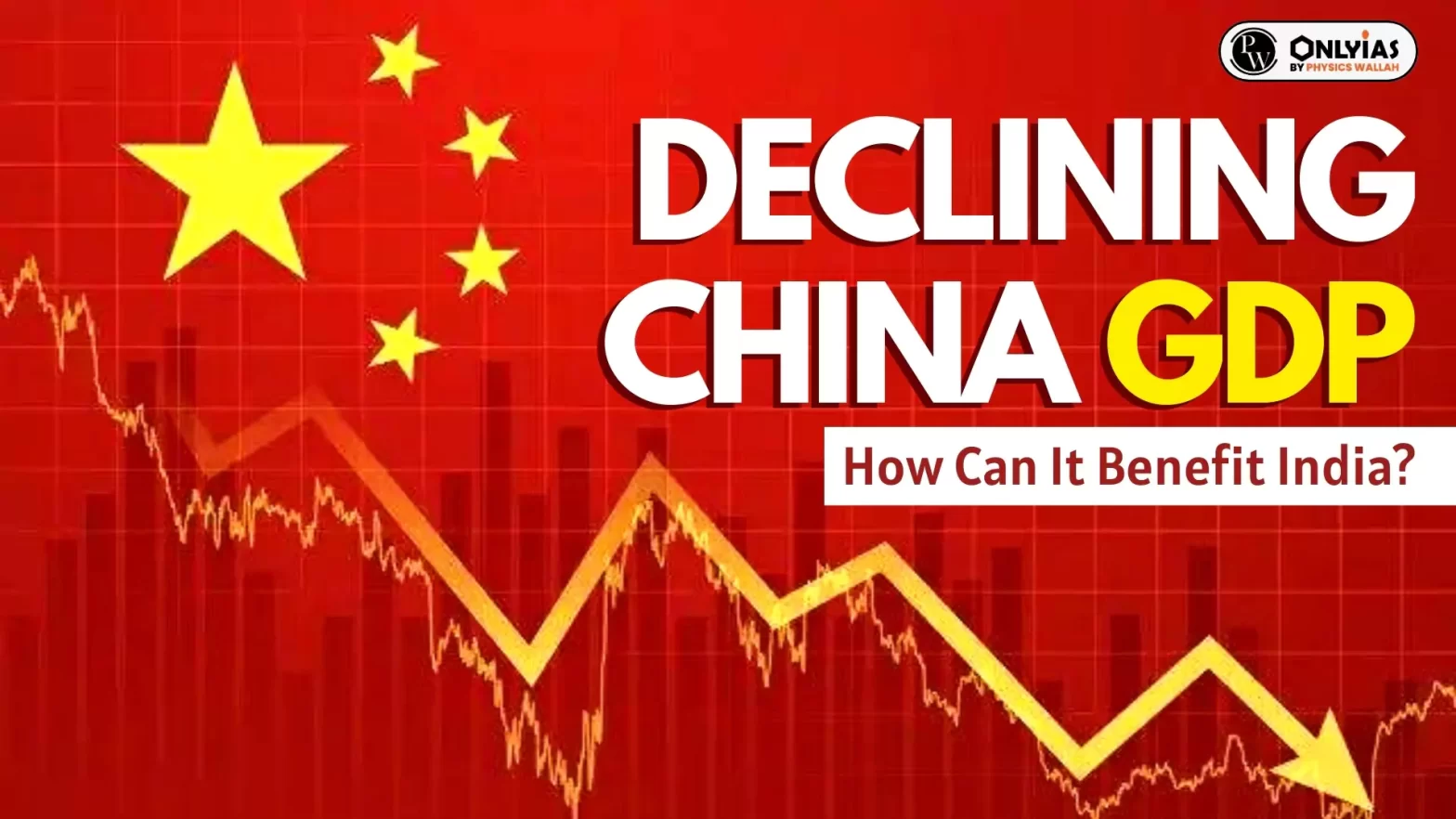![]() 31 Jan 2024
31 Jan 2024

This editorial is based on the news “C Raja Mohan writes: India’s new possibilities amid China’s relative economic decline” which was published in the Indian Express. This article highlights that China’s relative economy is declining and presents an opportunity for India to take a lead.
| Relevancy for Prelims: $7-Trillion GDP: Indian Economy Review 2024, and Current India GDP Growth Rate.
Relevancy for Mains: Declining China GDP and Impact on India and the World. |
|---|
Declining China GDP is an opportunity for India that needs to catch up. India needs to stay calm, build on its strengths, and avoid the kind of nationalist hubris that has undermined China’s fortunes.
| Must Read | |
| NCERT Notes For UPSC | UPSC Daily Current Affairs |
| UPSC Blogs | UPSC Daily Editorials |
| Daily Current Affairs Quiz | Daily Main Answer Writing |
| UPSC Mains Previous Year Papers | UPSC Test Series 2024 |

<div class="new-fform">
</div>